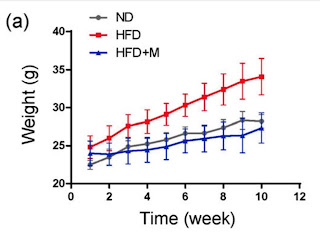Onion, chocolate, tea or wine - flavonols as natural medicines (or poisons?)
In recent years, a number of studies focused on investigating the medicinal effects of plant extracts containing, for example, quercetin, myricetin, kaempferol, EGCG (epigallocatechin gallate) and other so-called flavonols, a subset of the larger group of plant flavonoids, have appeared. Effects on obesity, heart disease and cancer are being investigated. Their effects are really interesting and surprising, especially for those researchers who have no idea about the transcription factor HIF-1 and its effects on cellular metabolism. For these ignorant people, their effect is incomprehensible, even mysterious. This cannot happen to us, we already know what inappropriate activation of HIF-1 can cause, but also inappropriate deactivation of this factor that controls hundreds of genes. Let's take a closer look at the results of several studies.
First, we will look at the options for solving obesity, caused by the consumption of inappropriate fats. The study was conducted on three groups of mice, the first had normal diet (ND), the second had an increased fat content in the diet (HFD) and the third group received myricetin in addition to the increased fat content (HFD+M).
As you can see in the graphs, myricetin was able to eliminate almost competently the effect of increased fat consumption (weight, fat tissue, blood glucose and leptin signaling). Unfortunately, the composition of fats is not specified in the study, but a non-negligible content of linoleic acid, which triggers pseudohypoxia, can be assumed. The explanation, as we will see below, involves the effect of flavonols on the HIF-1 factor, similar to how this factor was genetically switched off in another successful study. Thus, flavonols have the ability to switch off pseudohypoxia, the false signaling of lack of oxygen.
We can learn more about the effect of flavonols on the HIF-1 factor in a study investigating the effect on cancer cells.
This table provides both an overview of the investigated substances and the effect on HIF-1 and the investigated cancer tissue. And here another influence also appears, so-called iron chelation. What is chelation? It is a phenomenon in which a certain atom is bound inside the structure and is thus deactivated. This can be either beneficial or harmful depending on the situation. In the case of flavonols, iron chelation occurs. This will induce increased stabilization of HIF-1α that we do not want, which can also induce iron deficiency. What is interesting is that flavonols can induce increased stabilization of HIF-1α, but they limit the movement of this factor into the cell nucleus and thus limit the overall activation of HIF-1. This is precisely the main considered anti-cancer effect, which aims to suppress pseudohypoxia (Warburg effect). They suppress pseudohypoxia, whatever it was caused by. But this can be dangerous for tissues that do not have enough oxygen under normal conditions, e.g. joints, bones, tendons, cornea, etc. For these tissues, flavonols can appear as poisons. Some nutritionists see precisely these plant poisons as the main cause of chronic problems with joints, tendons, spine, etc. You see, the claim about the general benefit of various active plant substances is probably not true. It should also be taken into account that they can significantly harm some cells.
What about the absorbability and content of flavonols in food? We can show you several comparative studies. Important sources of flavanols are, for example, onions, chocolate, red wine or tea. In general, alcohols promote the absorption of flavonols, but this study tells us that red wine is not a good source of flavanols. One glass of red wine (200 ml) can thus theoretically provide the body with a therapeutic amount, as can approx. 50 g of dark chocolate (70% cocoa), 12 grams of fried onions or 100 ml of black tea, i.e. approx. 4 mg of quercetin, but probably not. It won't be enough. The recommended daily dose of quercetin against viruses is up to a hundred times higher, and dietary supplements (concentrated extracts) are available with which these doses can be achieved. Can the same amount be dangerous for someone? For example, with regular use? Who knows, I'd rather assume, for some tissues it can.
 |
| Unfortunately, flavonols suppress the reaction to real hypoxia (HYP). |
 |
| An example of the effectiveness of quercetin against viruses |
References:
Myricetin protects against diet-induced obesity
Flavonoids Targeting HIF-1, Implications on Cancer Metabolism
Flavonoids induce HIF-1α but impair its nuclear accumulation and activity
Chocolate and red wine – A comparison between flavonoids content












Comments
Post a Comment